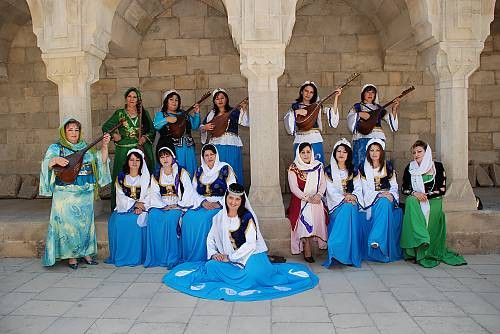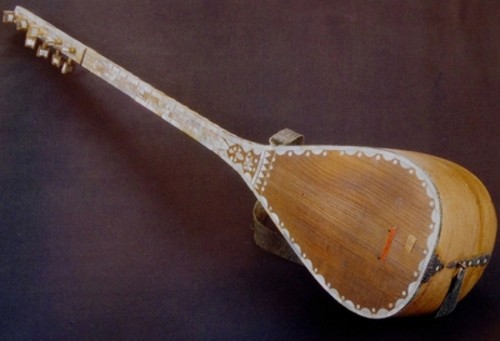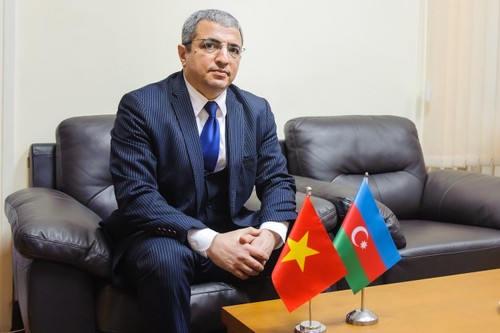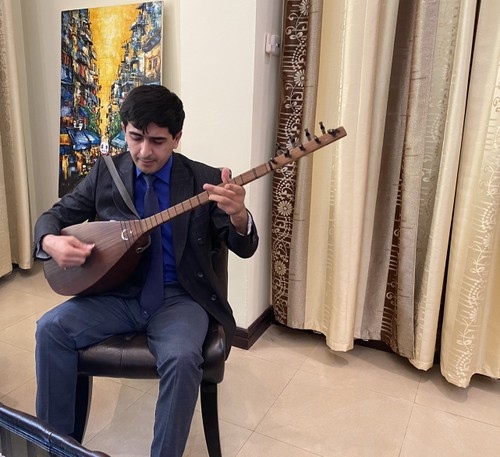 UNESCO`s recognition to the art of Azerbaijani ashiqs was facilitated by First Lady Mehriban Aliyeva, President of the Heydar Aliyev Foundation and UNESCO Goodwill Ambassador. (Photo: en.unesco.org) UNESCO`s recognition to the art of Azerbaijani ashiqs was facilitated by First Lady Mehriban Aliyeva, President of the Heydar Aliyev Foundation and UNESCO Goodwill Ambassador. (Photo: en.unesco.org)
|
The recent development of the ashiq art - an ancient cultural heritage - in the country as well as its recognition in the world is connected with Mehriban Aliyeva, President of the Heydar Aliyev Foundation.
We were received at the Embassy of the Republic of Azerbaijan in Hanoi. A melody played on the saz, a long-necked folk lute, dispelled the coldness of the winter day and made us feel warmer.
Ambassador Shovgi Mehdizade told us that the saz is one factor that makes ashiq a symbol of Azerbaijani culture, an emblem of national identity, and a guardian of Azerbaijani language, literature, and music.
“Ashiq” means “one who is in love,” said the Azerbaijani diplomat.
Ashiq combines several art forms: poetry, dance, drama, and musical improvisation. Ambassador Mehdizade said ashiq captivates the audience with the individuality of the performer, who conveys his personal thoughts and emotions through the music. An ashiq performance is a spectacle in which the saz and the musician form a unity.
He noted, “Ashiq involves a talent from God because it inspires love for the motherland, love for the family, and love for one’s children and lady. It can inspire every one of us, but only a very talented artist can create masterpieces of poetry. I think the main feature is a talent from God, and from that comes all this creativity.”
 Saz is ancient stringed musical instrument (Photo: azertag.az) Saz is ancient stringed musical instrument (Photo: azertag.az)
|
The saz, played with a plectrum or fingerstyle, was an inspiration during the times of war. That is why it í considered very important in Azerbaijani culture, said the Ambassador.
“Ashiq music is mostly patriotic, and had inspired soldiers in the past to defend their homeland.” Ambassador Mehdizada told us.
“Ashig music is among most patriotic songs,” said Ambassador Mehdizada.
First stringed instruments of turks, including saz, had also been used for playing for cradles of children, lulling for getting sweet dreams.
The classical repertoire of the ashiq music includes 200 songs, 150 literary-musical compositions, 2,000 poems in different traditional poetic forms, and numerous stories. Regional variations may include other musical instruments, but all are united by a common national language and artistic history.
Ashiq artists are a part of weddings, parties, and festive events throughout the Caucasus and appear on concert stages, radio, and television, sometimes synthesizing classical melodies with contemporary music as they continue to expand their repertoire.
But it depends on the master who is playing it, said the Ambassador, adding, “When you listen to the saz and close your eyes, it seems to be several instruments, not just one. And in the 18th and 19th centuries, ashiqs were the main people in wedding parties. Without ashiqs, no wedding parties could take place.”
 Ambassador Shovgi Mehdizade (Photo: Embassy of the Republic of Azerbaijan) Ambassador Shovgi Mehdizade (Photo: Embassy of the Republic of Azerbaijan) |
It is for all these reasons that in 2009 the art of Azerbaijani Ashiqs was inscribed on the Representative List of the Intangible Cultural Heritage of Humanity.
The Ambassador affirmed, “These masterpieces of literature are from ancient times. Even today this music influences musical activities and musical development from Central Asia to Balkans. There are many examples of ashiqs’ influence on the development of music in the region. That's why it’s not limited to Azerbaijan. The effects of its creativity are spread very widely.”
 Musa Guliyeve, attaché of the Embassy of Azerbaijan (Photo: Bao Tram) Musa Guliyeve, attaché of the Embassy of Azerbaijan (Photo: Bao Tram) |
The art of ashiq is a professional musical activity, but many amateurs who have interest to the saz also sing and play ashiq melodies.
Musa Guliyev, Attaché of the Embassy of the Republic of Azerbaijan, said, “If you have interest, some talent and creativity, it’s not that difficult to learn playing the saz. With creativity, you can be a good performer and musician.”
Not only is ashiq an illustration of a distinct poetic thought, it carries centuries-old wisdom, experience, and culture. It bears a richness, a variety of speech styles, simplicity, beauty, poetic features of the national language, and a unique emotional range.
An ashiq artist is the main lyrical hero and the main person in the art of ashiq. He has the talent to improvise verses. Ashiq embraces literary expression and is a bridge between oral, written, and folk literature.